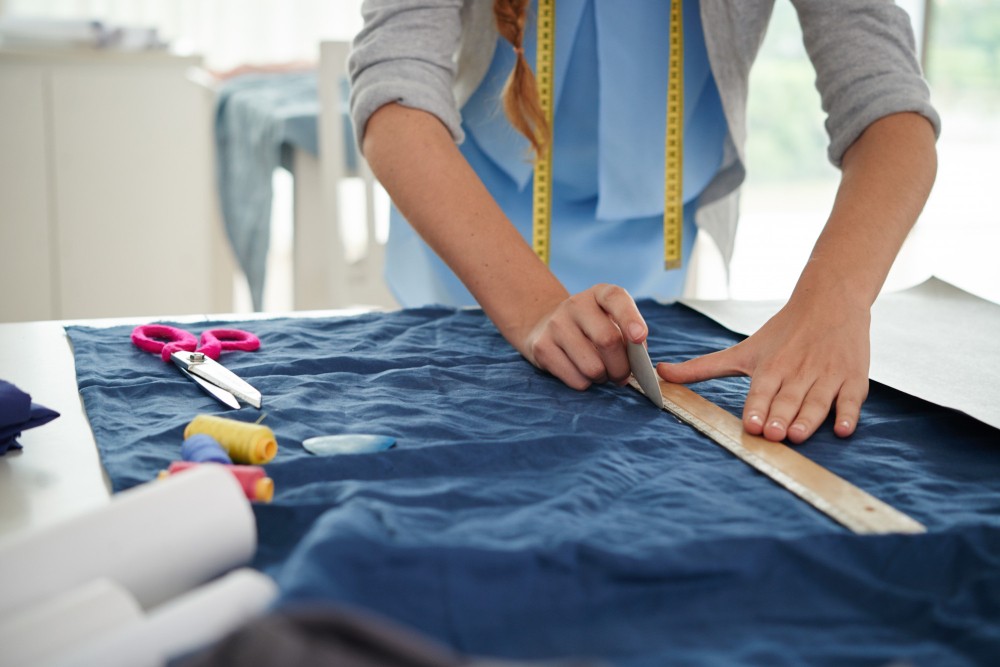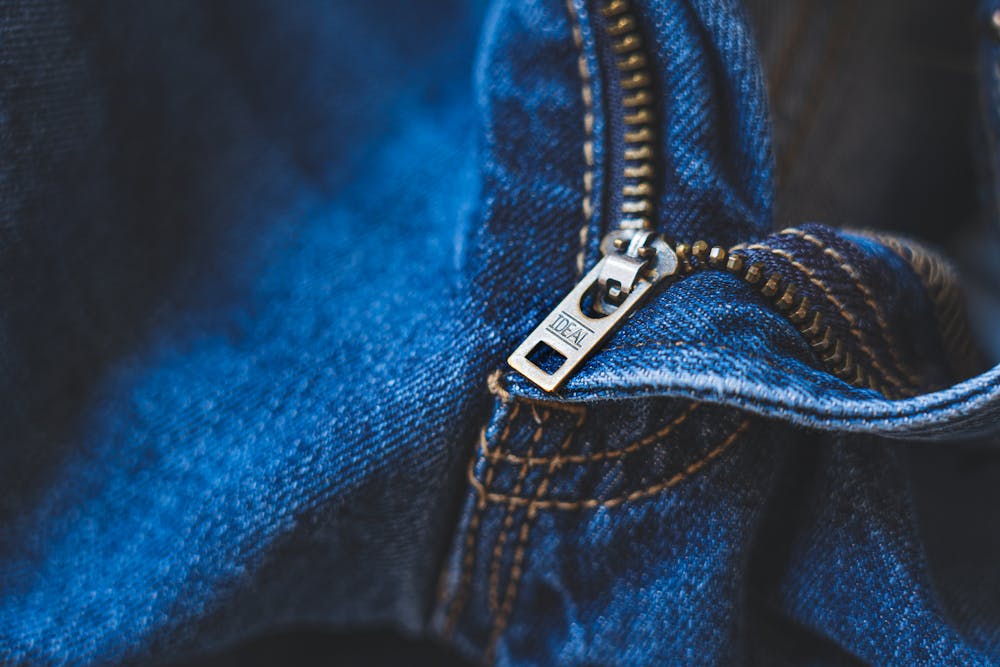We’ve all been there—you find the perfect piece of clothing, but it’s just a little too big. Whether it’s a vintage dress that fits everywhere except the waist, a pair of jeans that gape at the back, or a blazer that looks great but feels boxy, getting the right fit can make all the difference.
If you’ve ever wondered how to make clothes smaller, there are several ways to adjust garments to fit your body better. Some methods involve professional tailoring, while others can be done at home. In this guide, we’ll explore different techniques to help you resize your clothes, whether you prefer sewing alterations or no-sew solutions like shrinking fabrics in the washer.
At our alterations shop, we specialize in making clothes fit like they were made just for you. Whether you need a small adjustment or a complete reshaping, there’s always a solution to make your favorite clothes smaller while maintaining their original look and structure.
Methods for Making Clothes Smaller
There are many ways to make oversized clothes fit better, depending on the type of garment, fabric, and how much adjustment is needed. Some methods involve sewing, while others use heat or accessories to create a snugger fit.
If you’re looking for a long-term solution, professional tailoring is the most effective way to make big clothes smaller while maintaining their structure. However, if you need a quick fix, some DIY tricks can temporarily adjust the fit of your garments.
In this section, we’ll explore different sewing techniques to make your clothes smaller, such as taking in seams, shortening, and hemming for a better fit.
Taking in seams
One of the most common ways to resize clothing is by taking in the seams. This method works well for dresses, shirts, pants, and jackets. A tailor can carefully adjust the side seams to create a slimmer fit without distorting the garment’s design.
When done professionally, this alteration is nearly invisible, preserving the original construction of the piece.
Darting and shaping
Darts are a tailor’s secret weapon for refining the shape of a garment. If a blouse, dress, or jacket feels too loose in certain areas, adding darts can help contour the fabric to your body. This technique is especially useful for achieving a flattering fit in the waist or bust without changing the overall structure of the garment.
Shortening and hemming
Sometimes, the length of a garment makes it feel oversized. Hemming is a simple yet effective way to make pants, skirts, or dresses feel more tailored to your proportions. For jeans, professional alterations can preserve the original hem, so they maintain their factory finish even after being shortened.
Adding Elastic or Drawstrings
For a more flexible fit, adding elastic or a drawstring can be a great option. This works particularly well for pants and skirts that are slightly too large in the waist. Instead of permanently taking in fabric, an elastic band allows for some adjustability, making the garment more comfortable and practical.

Adjustments by garment type
Not all garments require the same type of alteration. While some can be easily taken in at the seams, others need more precise tailoring to maintain their original structure and fit. Understanding the best way to make your clothes smaller ensures that the adjustments look natural and enhance the overall shape of the garment.
Some fabrics allow for simple modifications, like hemming or darting, while others require more advanced techniques to make big clothes smaller without affecting their design. Below, we explore the best approaches for different types of clothing.
Dresses and skirts
Dresses often require alterations in the bust, waist, or hips. A skilled tailor can take in the seams or add darts to enhance the fit without affecting the overall style. If a dress or skirt is too long, hemming is a great way to achieve the perfect length while keeping the original design intact.
Pants and jeans
A common issue with pants is a loose waistband. Taking in the waist can transform how a pair of jeans or trousers fit. Tapering the legs is another popular alteration, especially for creating a more modern, slim-cut silhouette.
Shirts and blouses
If a shirt or blouse feels too boxy, adjusting the side seams and sleeves can make a huge difference. Tailoring can create a more structured look without making the garment feel tight or uncomfortable.
Jackets and blazers
A well-fitted blazer or jacket can elevate any outfit. If a jacket feels too big, a tailor can take in the sides, adjust the shoulders, or shorten the sleeves for a sharper, more polished appearance.
How to make clothes smaller without sewing
Not everyone has a sewing machine or the skills to make precise alterations. Luckily, if you want to make clothes smaller without sewing, there are a few methods to consider:
- Fabric tape or safety pins: for temporary adjustments, double-sided fabric tape or small safety pins can help secure excess fabric in place.
- Belts or sashes: a simple belt can instantly make a loose dress or oversized shirt look more fitted.
- Knotting or tying: tying the ends of a loose shirt or dress at the waist can create a more tailored look without any alterations.
While these solutions can work in a pinch, they don’t offer a permanent fix. For long-term results, professional tailoring is still the best option.
How to make clothes smaller in the washer
If you’re looking for a no-sew solution, you may be wondering how to make clothes smaller in the washer. While not all fabrics respond well to this method, materials like cotton and wool can shrink when exposed to heat and water, making them a good option for a quick size adjustment.
Here’s how to do it effectively:
- Use hot water: washing garments in hot water encourages shrinkage, especially in natural fibers.
- High heat drying: after washing, place the clothing in the dryer on a high heat setting to further reduce its size.
- Check and repeat if needed: some fabrics may require multiple wash and dry cycles to achieve the desired fit.
This method works best for garments made from cotton, wool, or other natural fibers, but results can vary. Keep in mind that shrinking fabric can sometimes lead to uneven sizing or changes in texture. If you’re unsure, test the method on an old garment before trying it on a favorite piece.

DIY vs. Professional Tailoring
Some minor adjustments, like adding a belt to cinch a dress or using fabric tape for a temporary hem, can be done at home. But for long-term solutions, professional tailoring is the best way to ensure durability and a flawless fit.
A skilled tailor understands fabric behavior, garment construction, and stitching techniques that go beyond basic DIY fixes. Whether you need to reshape a dress, taper a pair of jeans, or tailor a blazer to perfection, professional alterations guarantee a polished and long-lasting result.
Tailors Couture ensures your clothes fit just right
Making clothes smaller doesn’t mean compromising their original style. With the right alterations, you can achieve a perfect fit while preserving the integrity of the garment. Whether it’s a dress, jeans, or a structured blazer, professional tailoring ensures that your clothes look and feel custom-made.
If you have pieces in your wardrobe that need resizing, visit us at Tailors Couture—we’ll make sure every piece fits you just right!
Whether you need to make big clothes smaller, adjust a favorite piece, or completely reshape an outfit, our expert tailors provide customized solutions tailored to your needs. We work with all types of fabrics and garments, ensuring that every stitch contributes to a flawless fit.



